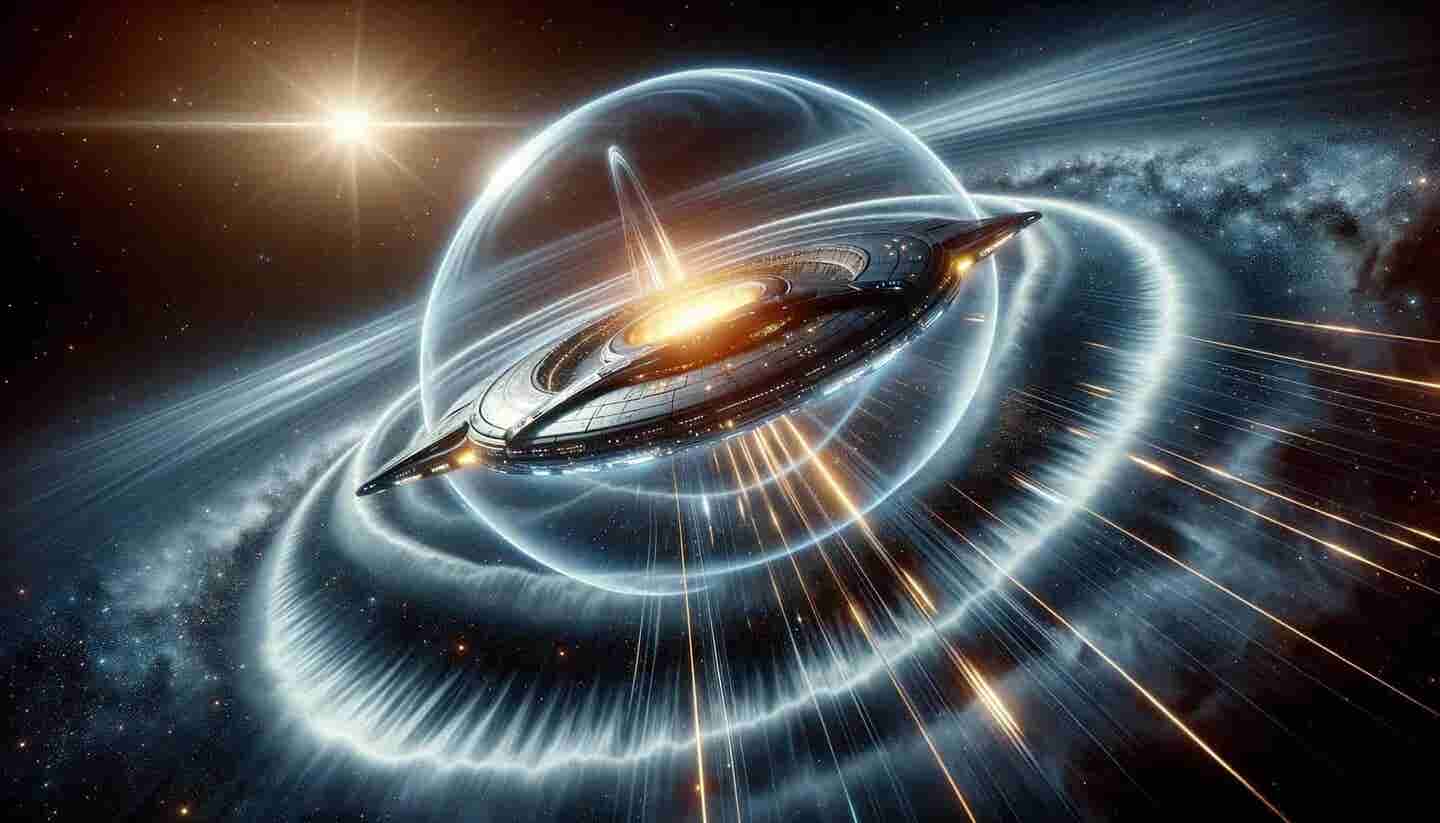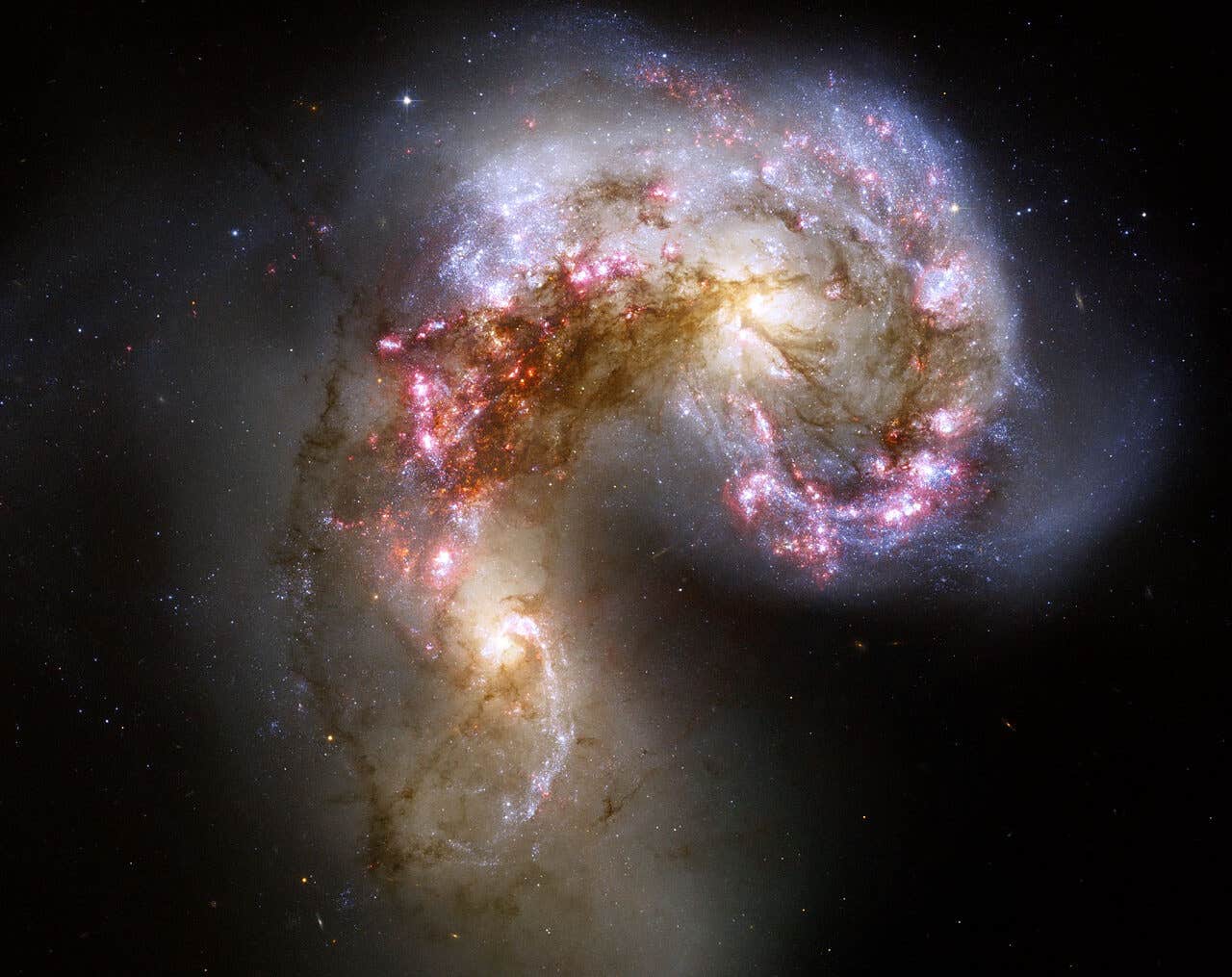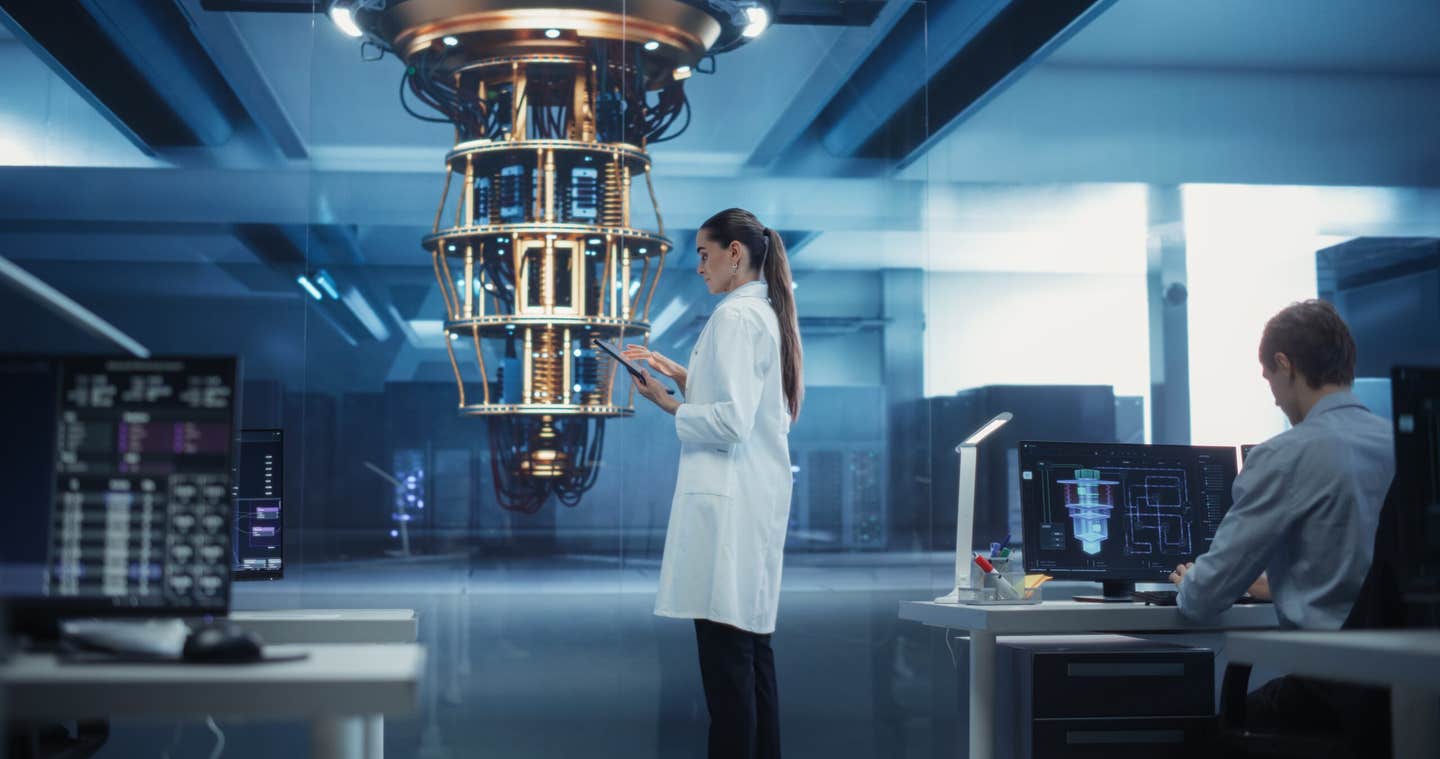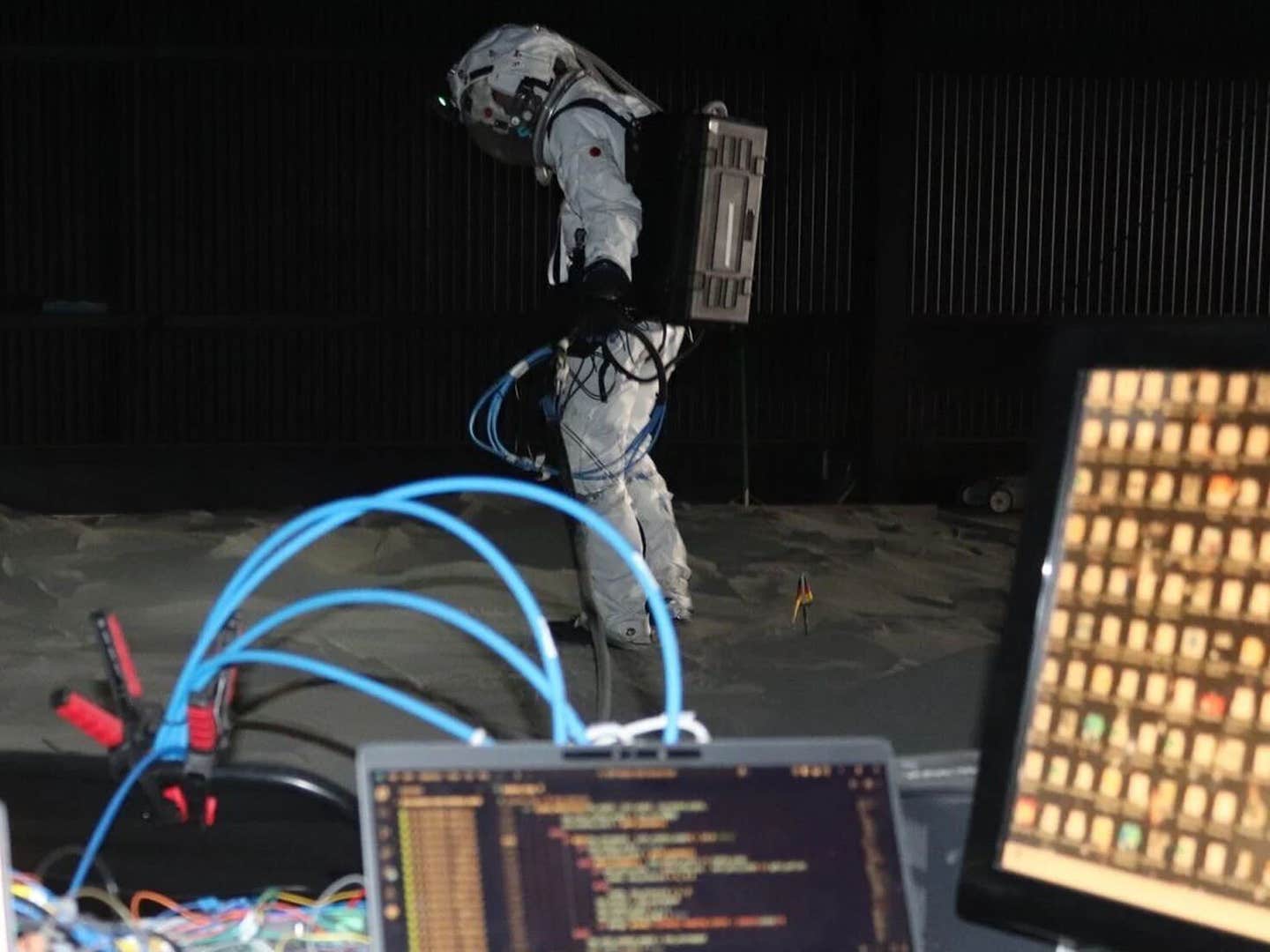Real warp drives could exist in the next 100 years, researchers say
Scientists are seriously exploring warp drives, a technology that could one day let us travel faster than light by bending spacetime itself.

Warp drive could enable faster-than-light travel without breaking physics. (CREDIT: AI-generated by DALL-E)
The idea of warp drive—the ability to travel faster than the speed of light—has fascinated humanity for decades. It began as a fictional concept in Star Trek and Star Wars, fueling imaginations and sparking real-world scientific curiosity.
Now, scientists are seriously investigating whether bending spacetime could allow us to reach distant stars quickly, turning science fiction into fact.
Understanding Warp Drives: How It Works
Warp drive doesn't involve rockets burning fuel. Instead, it bends spacetime itself. Physicist Miguel Alcubierre first described this concept in 1994. He proposed creating a bubble around a spacecraft that compresses space in front and expands space behind. Inside the bubble, your ship doesn't actually move faster than light—it stays still while spacetime shifts around it. This clever loophole avoids breaking Einstein’s universal speed limit.
Joseph Agnew, an undergraduate at the University of Alabama, simplified this theory: “Suppose you have a craft that’s in the bubble. You’d compress spacetime ahead of the craft and expand spacetime behind it.” Amazingly, you wouldn't feel motion inside; your destination would simply get closer.
The Physics Behind the Fantasy
Einstein's Theory of Relativity states nothing with mass can travel at or faster than the speed of light, as it would require infinite energy. Yet photons, light’s particles, move at this speed because they have no mass. But Alcubierre’s warp bubble cleverly sidesteps this rule, allowing the bubble itself—rather than the spacecraft—to exceed light speed.
However, there's a big catch: creating this bubble requires "negative energy" or "negative mass," strange materials that push space outward rather than pulling it in. Alcubierre’s original theory suggested you'd need negative energy equivalent to Jupiter’s mass—far beyond current human capabilities. NASA physicist Dr. Harold "Sonny" White believes tweaking the bubble’s shape could reduce this mass to about 700 kilograms, making the idea slightly more feasible.
Related Stories
- New tachyon study could unlock the secrets of time travel and reality
- Relativistic electron beams: A new frontier in interstellar travel
- Journey to the end of the universe—measured one step at a time
White leads a NASA team developing the White-Juday Warp Field Interferometer, a device intended to detect tiny warp bubbles. Although far from enabling actual space travel, this project could provide crucial steps toward real warp drives.
Challenges and Controversies
Scientists still debate whether warp drives can ever be practically achieved. Negative energy, though predicted by quantum physics, remains elusive in meaningful amounts. Small amounts have appeared in experiments like the Casimir effect—where two metal plates placed close together create negative energy. But these tiny quantities fall short of powering warp drives.
Further research revealed alarming issues. For instance, calculations indicate quantum fields at the warp bubble's edges might become infinitely large and unstable when activated. Other simulations suggest that the exotic matter might escape the bubble at speeds faster than light, quickly destroying it.
Even the smallest viable warp bubble, roughly 30 feet wide, would demand negative energy surpassing all positive energy in our universe. Yet some scientists argue reshaping the bubble could drastically reduce energy requirements. Still, these modifications only lower it to roughly the energy of a star—better, but still immense.
Professor Tim Dietrich from Potsdam University highlighted another serious issue: causality paradoxes. "Using a warp drive might cause paradoxes once it crosses light speed," he explained. Essentially, faster-than-light travel could potentially disrupt our understanding of cause and effect.
Could Warp Drive Be Possible Soon?
Despite these significant hurdles, scientists haven't dismissed warp drives entirely. Professor Geraint Lewis of the University of Sydney thinks we might discover exotic matter within the next century. "We have hints these materials exist in the universe," Lewis said. "But whether we can build a warp drive, we still don't know."
Lewis added optimistically, "Einstein's theory is a hundred years old, but we've only scratched the surface. In the next 100 or 1,000 years, hyper-fast travel might become achievable."
NASA’s Dr. White supports the idea that initial journeys could combine warp drives with traditional propulsion. Ships could leave Earth with standard rockets, engage warp drives once safely away, and deactivate them close to their destination. A trip to Alpha Centauri could then take months instead of centuries.
Detecting Warp Drives: Hunting Alien Technology
Interestingly, even if humans can't build warp drives yet, detecting aliens using this technology might be possible. Dr. Katy Clough, a cosmologist at Queen Mary University of London, suggests that collapsing warp bubbles would emit detectable gravitational waves. If these exist, Earth-based detectors could potentially spot them.
Dietrich and Clough studied scenarios where the exotic matter's containment field collapses. "The bubble becomes unstable, collapses, and creates ripples propagating outward," Dietrich said. Detecting these gravitational waves would mean confirming someone else has already mastered warp travel.
Clough humorously added, "If anyone has a spare billion pounds for a high-frequency gravitational wave detector, please let us know!"
What Warp Travel Would Really Look Like
Movies like Star Wars depict warp drives as dazzling bursts of streaking stars. But real warp travel would likely look different. According to Dr. Clough, looking forward would show objects shifted toward blue, while backward views would turn red—effects of warped light wavelengths. Shapes would appear distorted, similar to viewing through curved glass.
Interestingly, research by physics students at the University of Leicester suggests passengers wouldn't see stars streaking past. Instead, they'd witness a glowing disc due to cosmic background radiation shifting into visible light.
Dr. Clough praised Star Trek Beyond for accurately depicting warp visuals: "The 'bullet shot' was loosely based on how light curves around a warp bubble."
Science Fiction or Science Future?
Warp drive remains speculative and distant, yet history teaches us not to dismiss such concepts lightly. Today's technology—touchscreens, voice assistants, 3D printing—began as improbable ideas from fiction.
Star Trek famously predicted warp travel by 2063. While ambitious, scientists agree breakthroughs might bring us closer faster than we imagine. Continued exploration in physics, quantum mechanics, and engineering could one day make warp drives reality.
Whether humanity ever travels at warp speed remains uncertain. Yet the pursuit itself enriches our understanding of the universe, pushing scientific boundaries. Perhaps someday, space journeys lasting mere moments instead of lifetimes might transition from science fiction into our everyday reality.
Other theories for the development of warp drive
Aside from Joseph Agnew's Alcubierre model theory, here are some other warp drive theories and concepts currently being explored:
White-Juday Warp Field Interferometer
- Harold "Sonny" White, a NASA scientist, proposed adjustments to the Alcubierre model to make the concept more feasible. He suggested that shaping the warp bubble into a torus could reduce the energy requirements by orders of magnitude, theoretically making it possible to create a smaller warp bubble around a craft.
- Challenges: Despite energy reductions in theory, creating even this smaller warp bubble still demands technologies and materials that are currently beyond our reach.
Casimir Effect and Negative Energy
- The Casimir effect demonstrates how quantum fluctuations between two closely spaced objects can create negative energy, which may contribute to warp drive development. This approach is still in the early stages and primarily focuses on understanding if and how we can harness negative energy on a larger scale.
- Challenges: Controlling and generating enough negative energy is currently beyond our technological capabilities, and more research into quantum field theory is needed.
Manipulating Extra Dimensions (Brane Cosmology)
- Some theories in string theory and brane cosmology propose that our universe may have extra spatial dimensions. If this is true, it might be possible to "shortcut" through these dimensions, effectively enabling faster-than-light travel without violating relativity. This idea is closely related to the concept of wormholes, another theoretical method for FTL travel.
- Challenges: This theory is still highly speculative and lacks empirical support, as no direct evidence of extra dimensions or brane structures has been found.
Warp Drive with Quantum Field Theory Adjustments
- Some researchers have explored modifications to quantum field theory that could make warp drives more feasible. This approach involves exploring how quantum fields interact with spacetime and whether these interactions can be controlled or utilized to create stable warp bubbles.
- Challenges: Current quantum field theory modifications remain largely theoretical, and experimental methods to test these ideas are not yet available.
Dark Energy Manipulation
- Since dark energy is thought to drive the accelerated expansion of the universe, some have theorized that manipulating dark energy could enable us to create similar expansion and contraction effects in local space around a spacecraft.
- Challenges: Dark energy is one of the least understood aspects of physics, and manipulating it remains speculative. Researchers would first need to identify a way to harness dark energy in controlled settings.
Each of these theories faces significant obstacles due to the requirement for exotic matter, negative energy, or extremely advanced technologies that we do not yet possess. However, advances in quantum field theory, energy manipulation, and fundamental physics could potentially make warp drive—or something like it—more feasible in the far future.
Note: Materials provided above by The Brighter Side of News. Content may be edited for style and length.
Like these kind of feel good stories? Get The Brighter Side of News' newsletter.



